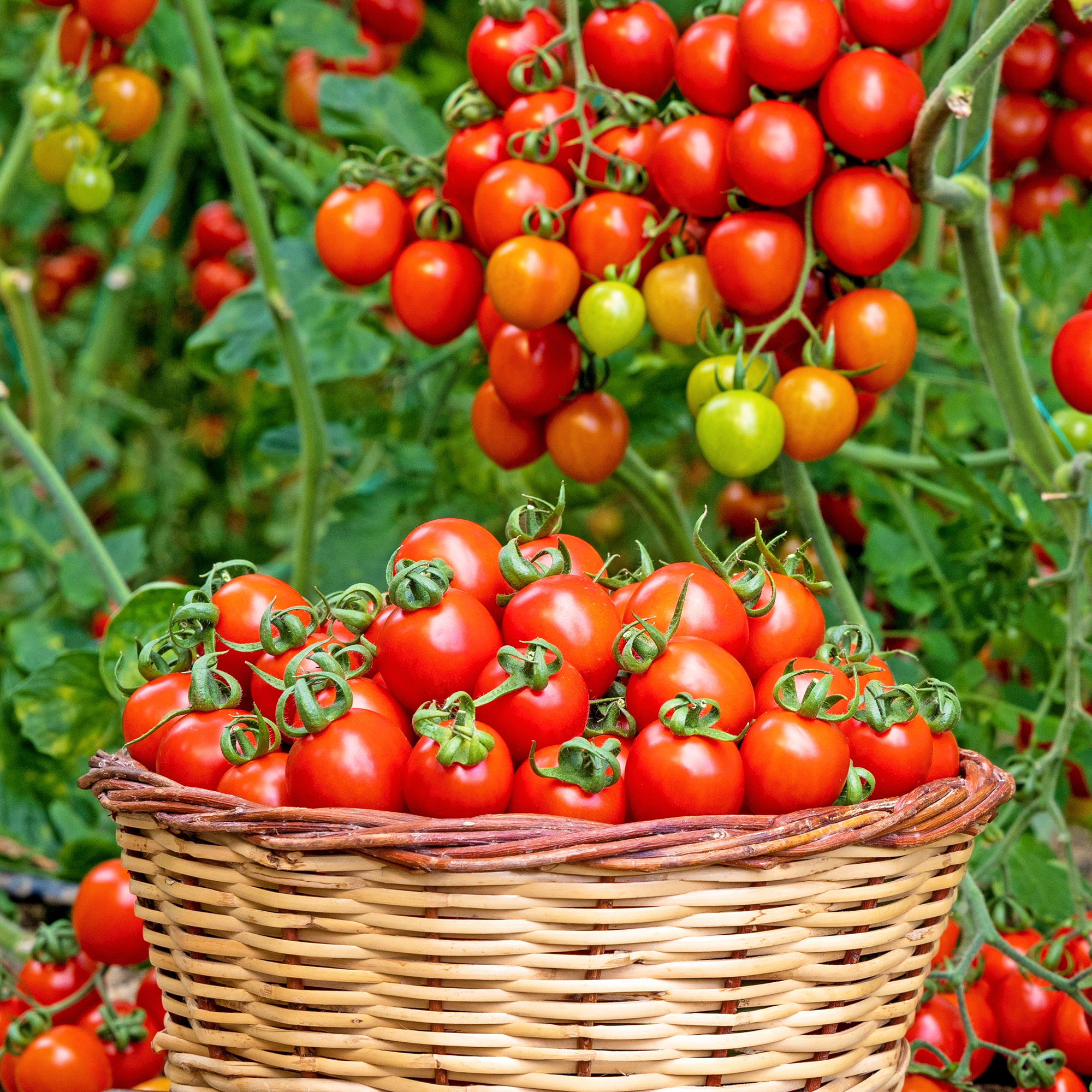10 Best Tomato Trellis Ideas You Can Buy Or DIY – For Bigger Yields And No Droop
Support your tomatoes the smart way – with simple structures that keep stems strong, fruit off the ground, and harvests at their best.
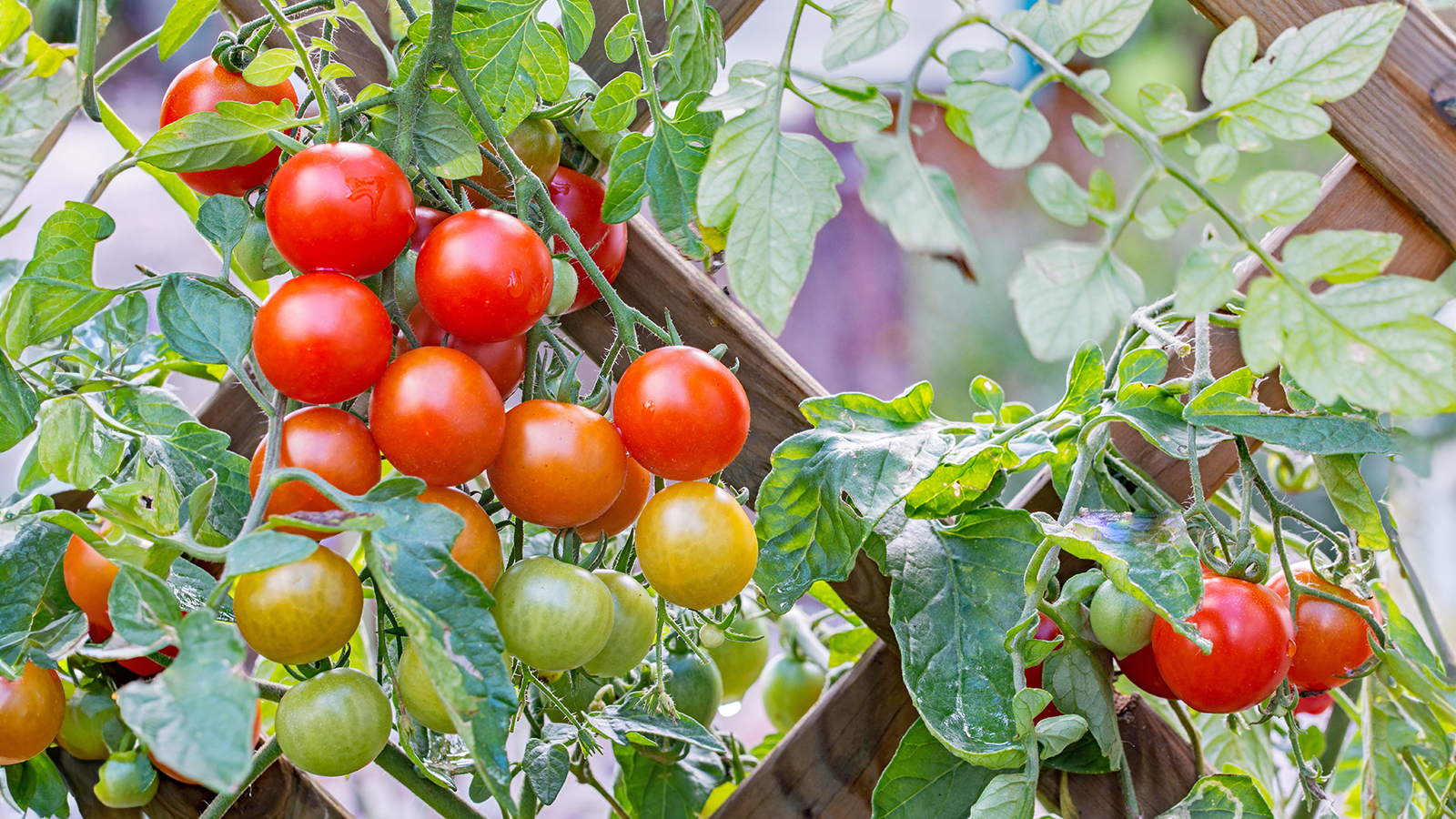

If you're growing your own tomatoes this season, it's time to get creative with some smart tomato trellis ideas. While tomato cages are a familiar choice, there's a whole range of alternative structures – many of which you can build yourself – that offer effective, attractive ways to keep your plants supported and productive.
Your checklist for how to grow tomatoes should go beyond just sun, soil, and watering routines. Support systems are essential – not just for keeping limbs from breaking under the weight of the fruit – but also to improve airflow, reduce the risk of common tomato diseases, and make harvesting a breeze. If you fail to provide support, the fruits are more likely to rot on the ground, and yields can be significantly lower.
While a basic tomato cage is a good start to support tomato stems, there are plenty of clever options to consider. A single stake can help train stems and encourage stronger, healthier growth. For something more structured, try a basket weave system using spaced stakes connected with twine – it's simple, affordable, and surprisingly sturdy. If your garden is bordered with a wire fence, then you already have a built-in framework: the grid can double as a ready-made trellis. A true trellis uses vertical and horizontal supports – wood, wire, or even twine – to guide plant growth.
Here, we'll break down some of the most effective and easy-to-implement trellis designs to ensure a bumper tomato crop.
Why Supporting Tomatoes is Essential
There are many types of tomatoes, but almost all are classed as either determinate or indeterminate, which dictates their growth habit. Indeterminate tomatoes are vigorous and vine-like; they continually produce fruit throughout the growing season until the weather gets too cold. Their stems can grow very tall so need to be trained to a support structure to help increase air and sunlight penetration and prevent the fruit from lying in the soil. Determinate tomatoes have a bushy growth habit and produce their fruit in one glut. However, they can still benefit from trellises or cages that keep the fruit up in the air and out of the dirt.
Tomato Trellis Ideas
Using some form of tomato trellis provides a strong and versatile support for plants and their fruit. It gives access to all parts of the plant for inspection and pruning away tomato suckers, enhances air flow and sunlight penetration, and makes harvesting easier. Many other types of vining crops can also benefit from a trellis system, such as cucumbers and smaller squash.
Any support method can be used to help tomato plants achieve high yields and optimum health, but the trellis is one of the more effective systems. A DIY tomato trellis is affordable, breaks down easily at the end of the season, and stores in a small amount of space. Read on for a range of solutions to support your tomatoes:
Sign up for the Gardening Know How newsletter today and receive a free copy of our e-book "How to Grow Delicious Tomatoes".
1. Tomato Stakes in Rows
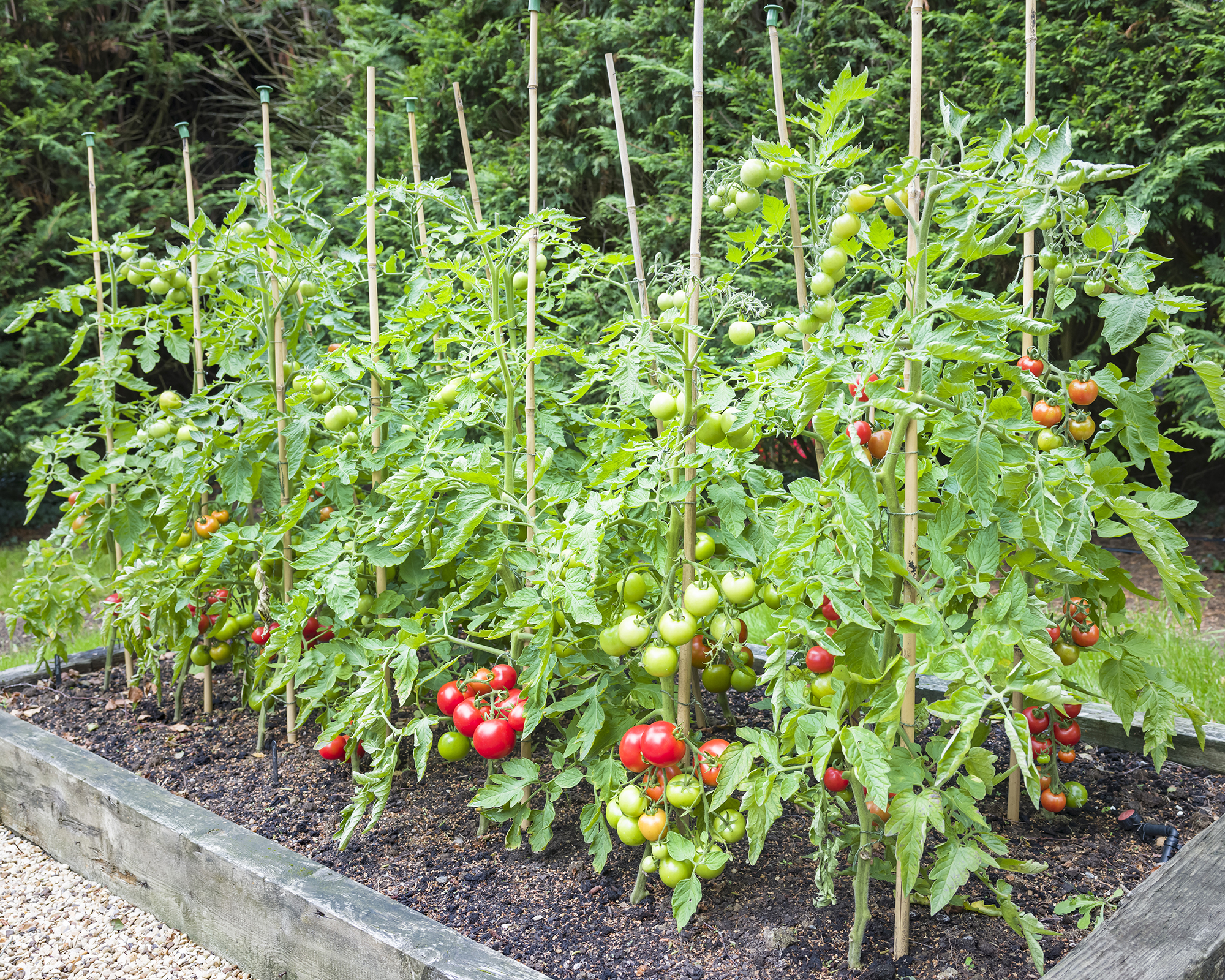
Staking tomatoes is about as easy as it gets – and when planted in rows, the canes can form a trellis structure by tying string horizontally. Because tomato plants will grow quite heavy once they produce, it is essential to pound the stakes deeply into the ground. A single stake should be at least 8 feet (3m) tall – such as these options from Amazon. This will enable them to be driven deep enough into the ground and still leave room for the long stems. You will need to tie in the tomatoes regularly as they grow – this soft tie reel from Amazon is perfect for the task.
2. Tomato Teepee
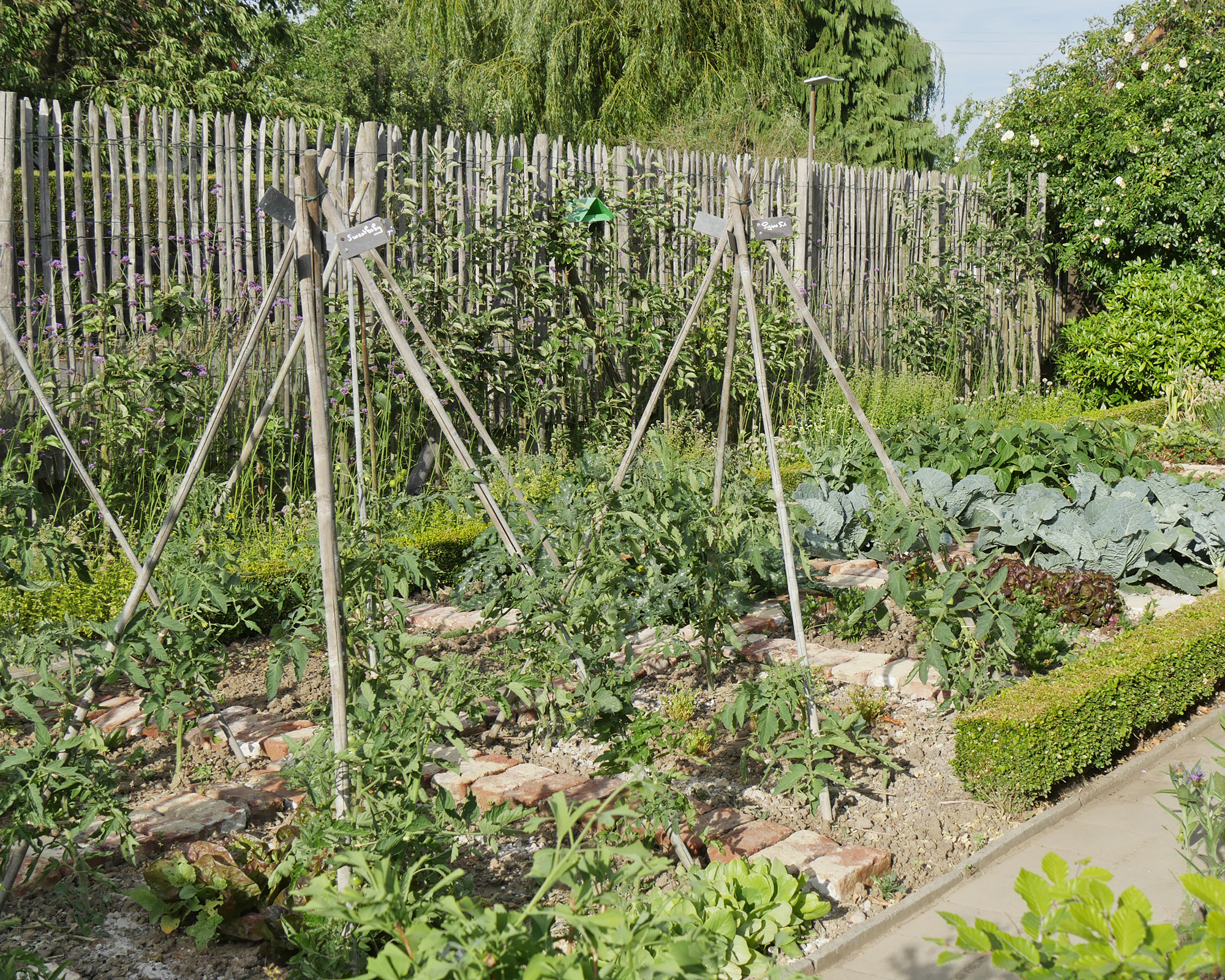
A tomato teepee is a conical construction made from slender wood or bamboo. You can turn one into a trellis by wrapping string around the perimeter. Teepees are quite lightweight and will require additional stakes to hold the form in place in case of a strong wind, but they allow you to tie long stems upward as the plant grows. You can easily make your own teepee with bamboo stakes of the same length. Gather them together at one end and secure all the stakes with stout wire. You'll need to use canes at least 6 feet (180cm) tall – ideally 8 feet (245cm).
3. Bespoke Cane Support with Netting
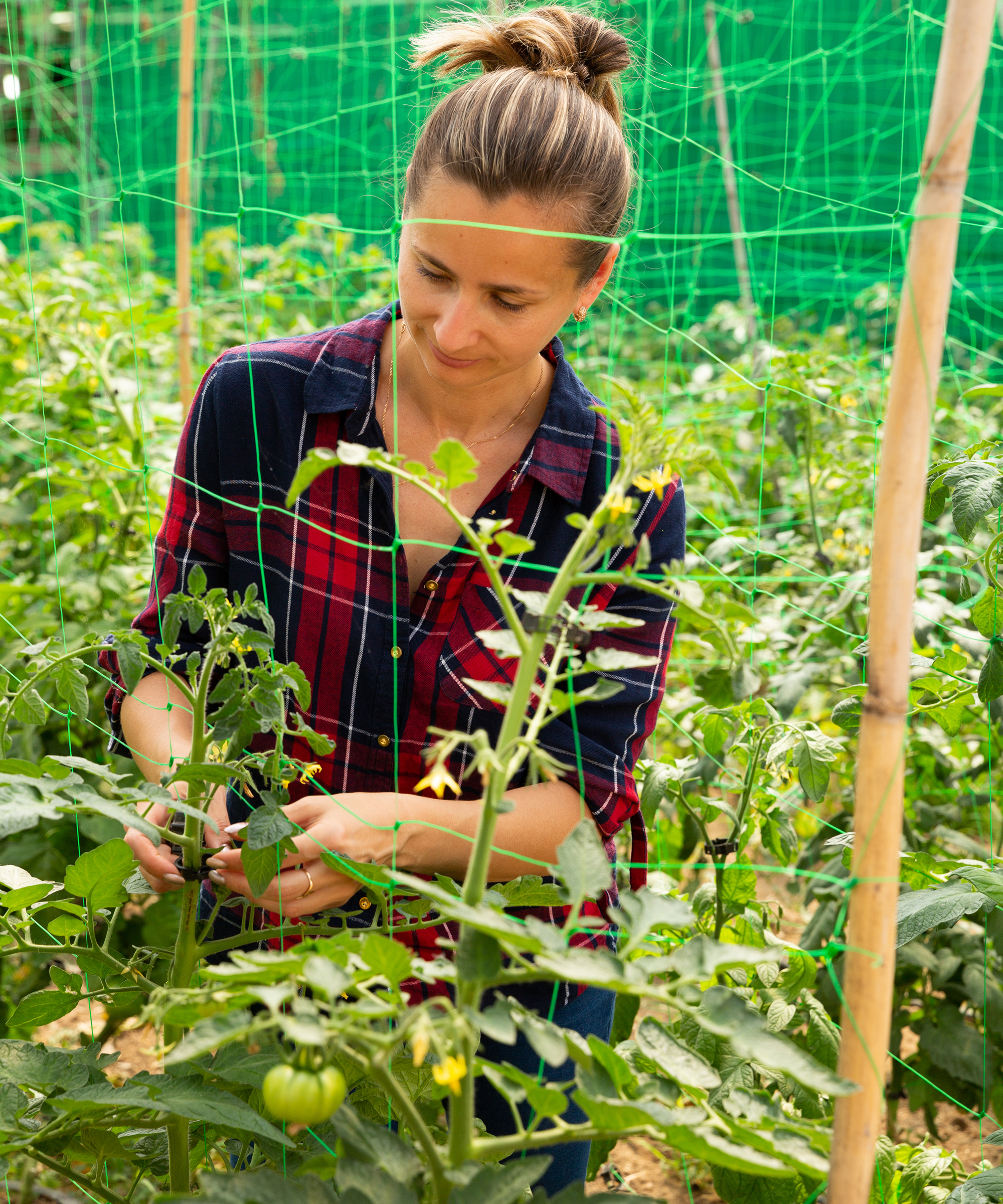
This system is very customizable and may be used for one or many tomato plants. It involves spaced canes driven into the ground with netting stapled to the canes. At the end of the season, the canes may be pulled up and the netting rolled up with them for storage. Bird netting is too light to support the stems, so choose something heavier and yet slightly malleable – this heavy-duty garden trellis netting from Walmart will do the job.
4. Tomato Cage
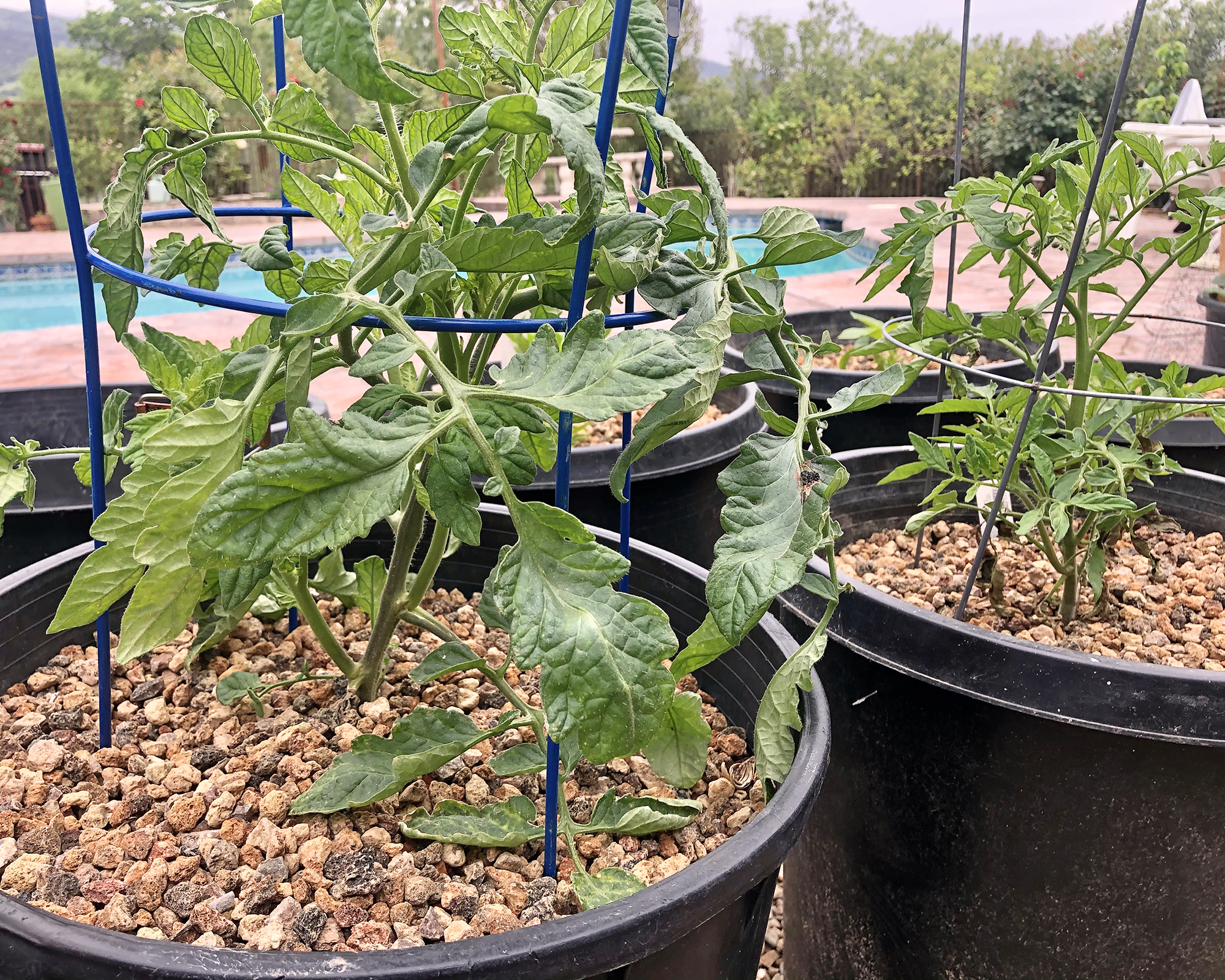
Tomato cages are lightweight and not as sturdy as some other methods, but widely available and affordable. They may be conical or square, with the square types tending to be more sturdy. They can be used in the ground or for growing tomatoes in containers. You simply insert the spikes at the bottom into the soil and train the tomatoes upward. Try to find a powder-coated or aluminum product that won’t rust outdoors, such as this set of three tomato cages from Amazon.
5. String Trellis
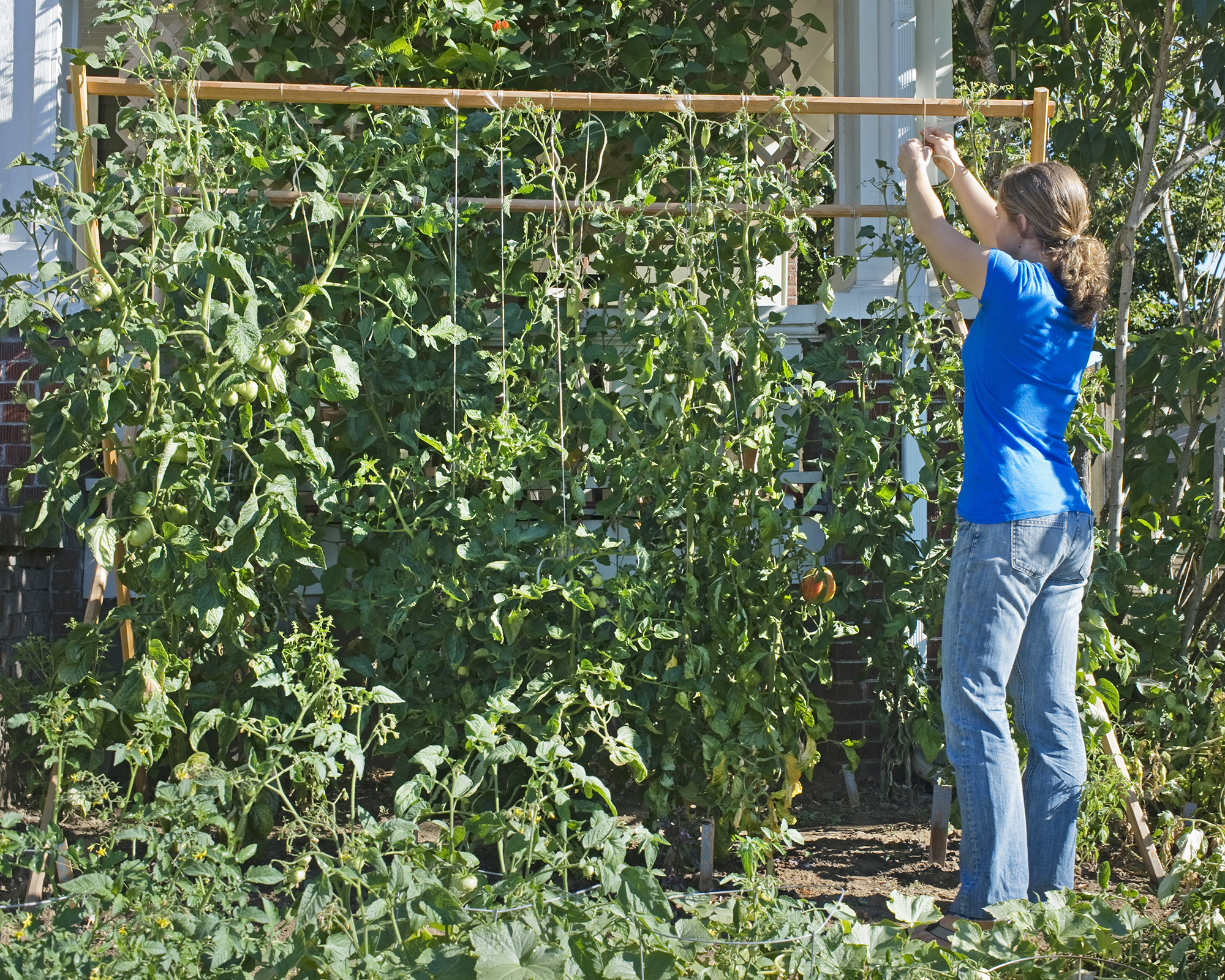
A string trellis is a clever method to create a hanging support for tomatoes and other vining plants that any gardener can achieve with some basic DIY skills. You will need to create a simple wooden structure with legs and horizontal supports across the top and bottom. Tie lengths of string in about 1-foot (30cm) intervals that stretch from the top to the bottom of the structure – each string will support one plant. Jute twine is fine, or you could try these roller hooks with string, from Amazon, which allow you to adjust the tension of the string as the plants grow.
6. The Florida Weave
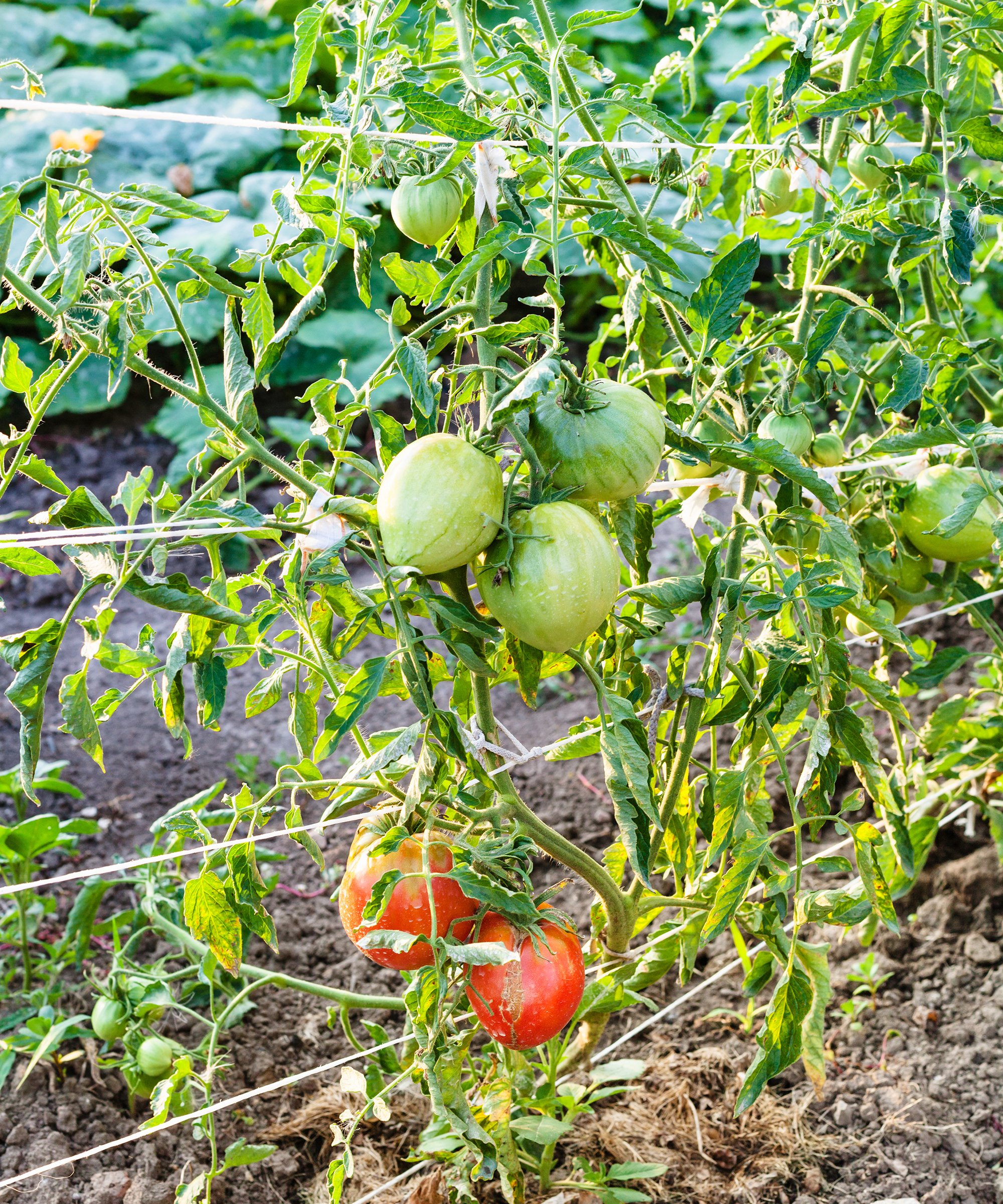
The Florida weave has become a favorite trellis method among indeterminate tomato growers. It's a horizontal string method whereby plants are woven in between rows as they grow. It is very useful when growing several tomato plants and is believed to increase yields. As with the other methods, you insert stout stakes deeply into the soil at intervals. Then, using twine, tie one end to the first stake and run it to the next. Here, loop the twine around the stake. Then continue in the same fashion along all the stakes. At the end, reverse direction and go back to the first stake. Continue this every 12 inches (30cm).
7. Arched Trellis
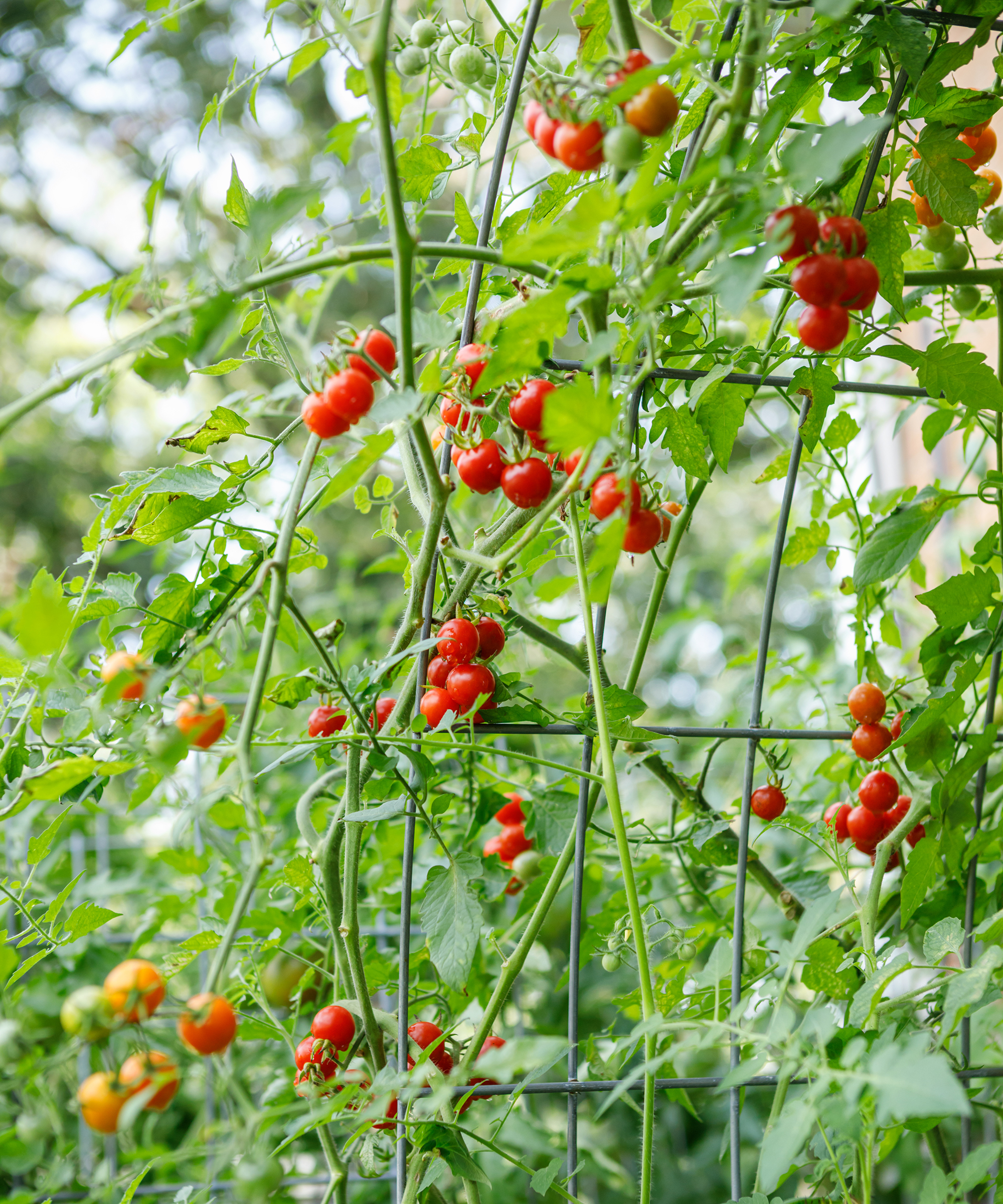
You may opt to purchase or make your own arched trellis. These are visually appealing, reusable, and allow for very easy harvesting. It is just what it sounds like, an arched arbor that has a pass through. It requires very sturdy materials and something that is bendable but sturdy such as young bamboo to form the arch. Wicker or willow are other options for the top. This Outsunny cucumber trellis from Wayfair is ideal for tomatoes.
8. Planter with Trellis
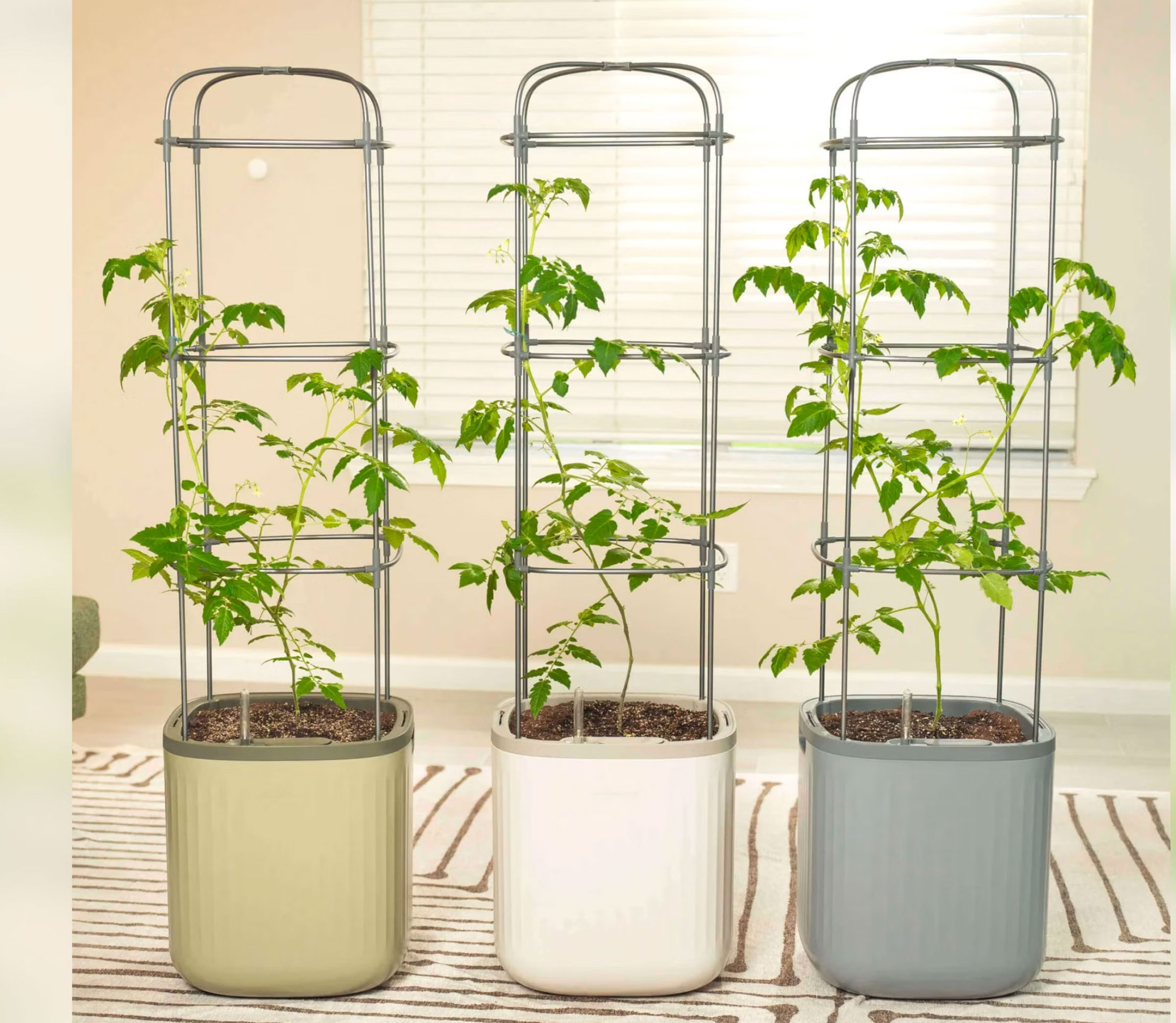
Determinate tomato varieties and smaller types like many grape or cherry tomatoes often do well in containers, but even these need a bit of support. Wicker, bamboo, metal, or even rebar can be tied, screwed, nailed, or stapled together to make a smaller trellis for a container. Alternatively, invest in the Vego self-watering tomato planter with trellis, available in the Gardening Know How Shop. It's fitted with wheels, so you can move it around easily between indoors and out, or to follow the sun throughout the day.
9. Cattle Panels
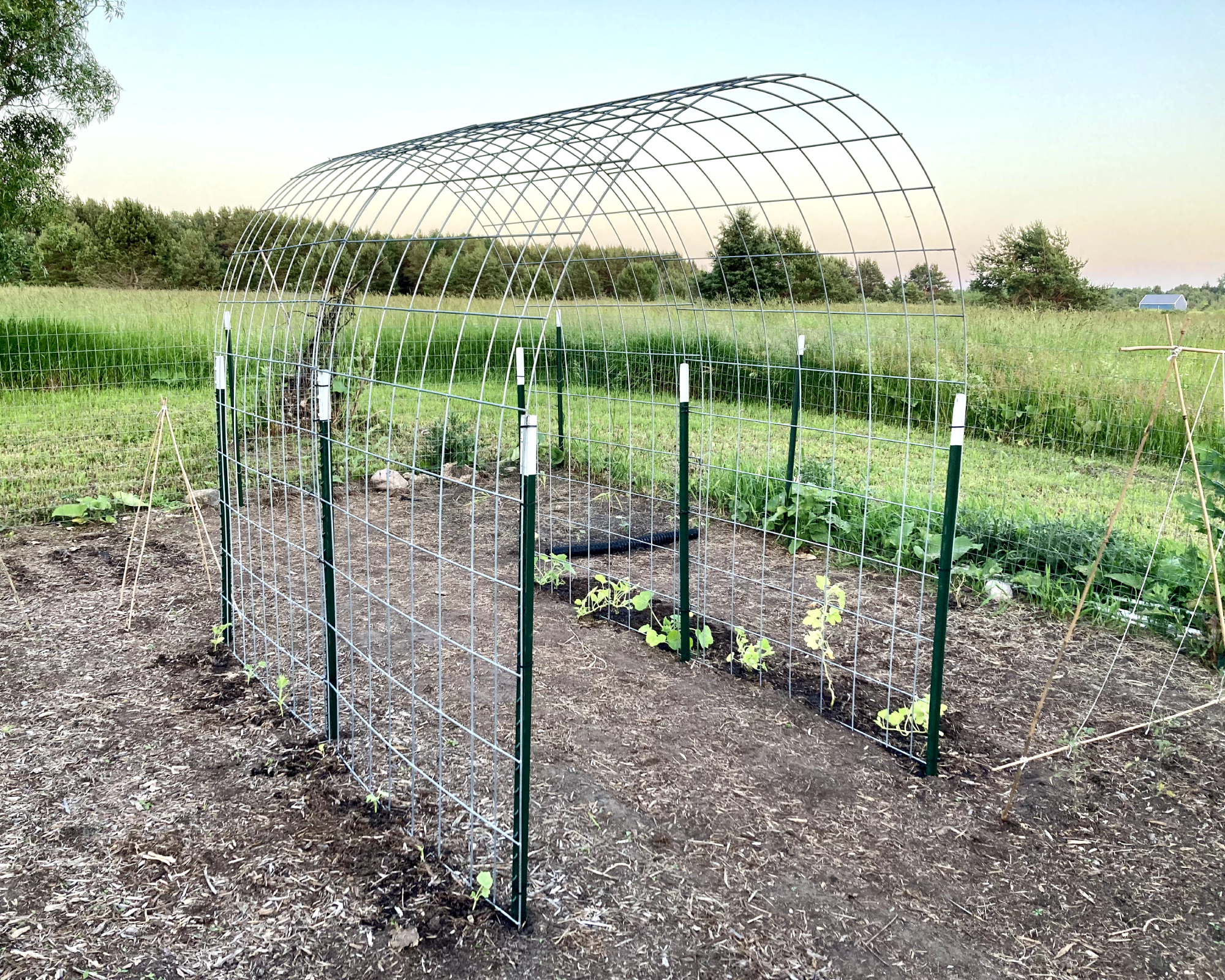
A cattle panel trellis is a fantastic DIY solution for tomatoes and other vining vegetables. Cattle panels are medium-gauge wire square mesh; they are bendable to a degree and, when topping four very deeply installed stakes, they make an arched planting option. Tomatoes can be planted at each stake and trained vertically to eventually reach the cattle panel. Panels are fairly inexpensive and found at rural supply outlets. Alternatively, this one from Amazon will make several trellises.
10. Fence or Chicken Wire
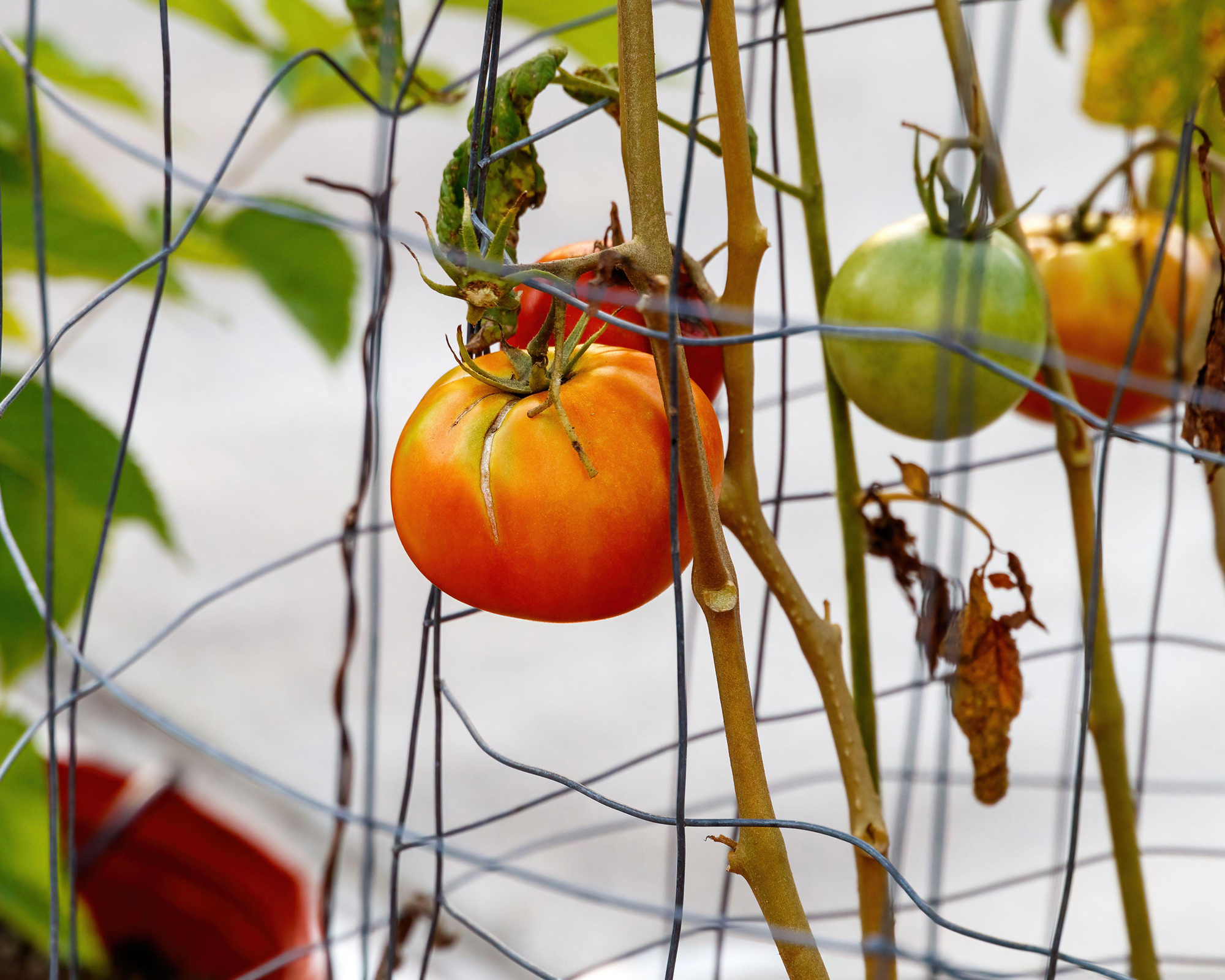
Most of us are familiar with the versatile garden product. To make a trellis for tomatoes, roll out some chicken or fencing wire – this chicken wire from Lowe's should do the trick – and insert sticks vertically into the mesh at several intervals. Then make a circular form and stab the stakes into the ground. You can train stems through the mesh or the wire. The only drawback is that the plant is securely inside the chicken wire cage, making it difficult for pinching suckers and other routine maintenance.

Bonnie Grant is a professional landscaper with a Certification in Urban Gardening. She has been gardening and writing for 15 years. A former professional chef, she has a passion for edible landscaping.
